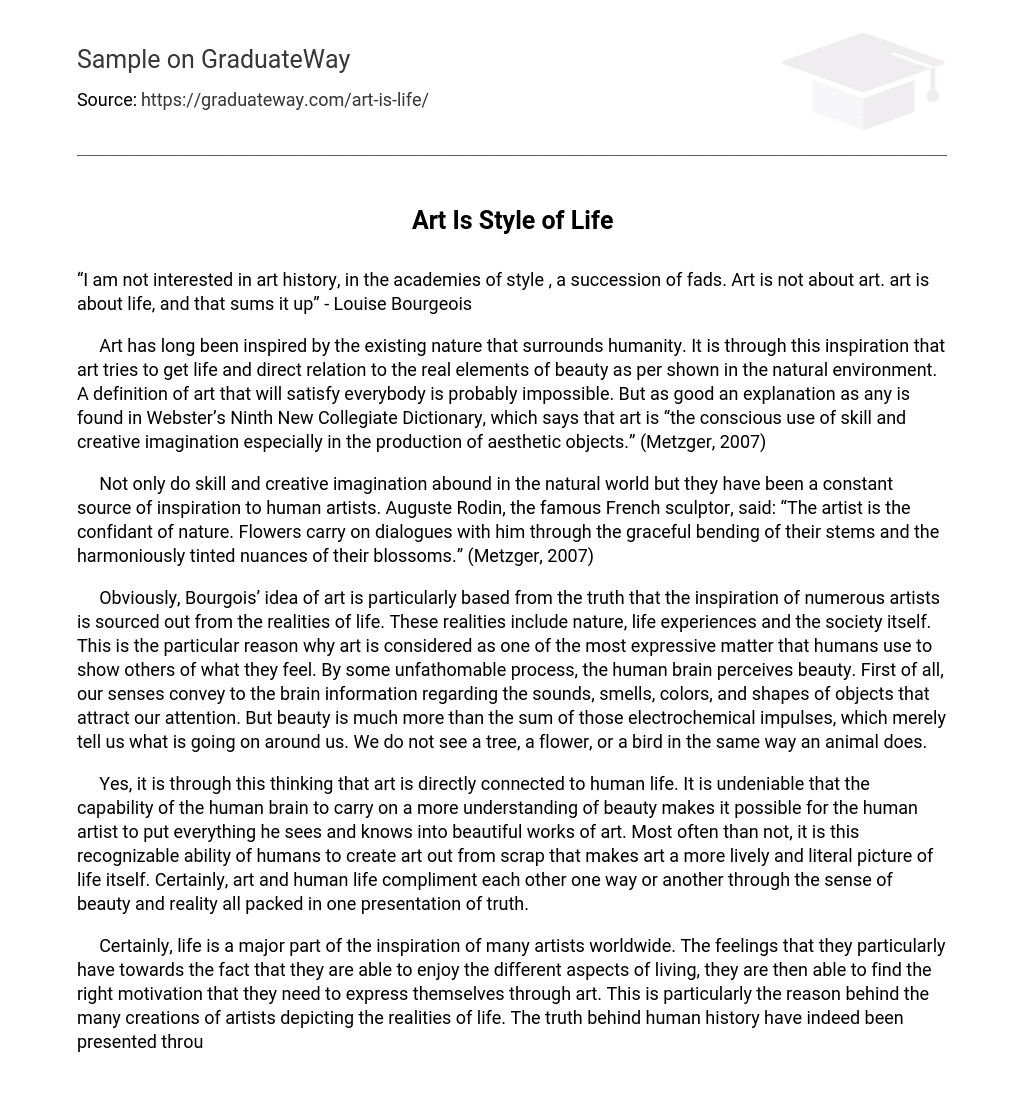“I am not interested in art history, in the academies of style , a succession of fads. Art is not about art. art is about life, and that sums it up” – Louise Bourgeois
Art has long been inspired by the existing nature that surrounds humanity. It is through this inspiration that art tries to get life and direct relation to the real elements of beauty as per shown in the natural environment. A definition of art that will satisfy everybody is probably impossible. But as good an explanation as any is found in Webster’s Ninth New Collegiate Dictionary, which says that art is “the conscious use of skill and creative imagination especially in the production of aesthetic objects.” (Metzger, 2007)
Not only do skill and creative imagination abound in the natural world but they have been a constant source of inspiration to human artists. Auguste Rodin, the famous French sculptor, said: “The artist is the confidant of nature. Flowers carry on dialogues with him through the graceful bending of their stems and the harmoniously tinted nuances of their blossoms.” (Metzger, 2007)
Obviously, Bourgois’ idea of art is particularly based from the truth that the inspiration of numerous artists is sourced out from the realities of life. These realities include nature, life experiences and the society itself. This is the particular reason why art is considered as one of the most expressive matter that humans use to show others of what they feel. By some unfathomable process, the human brain perceives beauty. First of all, our senses convey to the brain information regarding the sounds, smells, colors, and shapes of objects that attract our attention. But beauty is much more than the sum of those electrochemical impulses, which merely tell us what is going on around us. We do not see a tree, a flower, or a bird in the same way an animal does.
Yes, it is through this thinking that art is directly connected to human life. It is undeniable that the capability of the human brain to carry on a more understanding of beauty makes it possible for the human artist to put everything he sees and knows into beautiful works of art. Most often than not, it is this recognizable ability of humans to create art out from scrap that makes art a more lively and literal picture of life itself. Certainly, art and human life compliment each other one way or another through the sense of beauty and reality all packed in one presentation of truth.
Certainly, life is a major part of the inspiration of many artists worldwide. The feelings that they particularly have towards the fact that they are able to enjoy the different aspects of living, they are then able to find the right motivation that they need to express themselves through art. This is particularly the reason behind the many creations of artists depicting the realities of life. The truth behind human history have indeed been presented through famous paintings like the Spolarium of Antonio Luna of the Philippines which presented the hardships of the Filipino people during the early Imperial times of the Spanish regime as one of the world’s most powerful rulers during the 20th century. Undeniably, the different forms of art had been presented for a reason that the human history and the realities of life be presented and passed on from generations to generations.
References:
Phil Metzger. (2007). The Art of Perspective: The Ultimate Guide for Artists in Every Medium. North Light Books.
David G. Wilkins. (2004). Art Past, Art Present. Prentice Hall; 5 edition.





